The Nexus 7 (2013) Review
by Anand Lal Shimpi on August 22, 2013 6:00 PM ESTCPU Performance
The while the original Nexus 7 was fast for the money, the new Nexus 7 is just fast. Moving away from NVIDIA to Qualcomm, ASUS and Google settled on the APQ8064 Pro. Although we originally assumed this would be a quad-core Krait 200 based SoC, Brian's teardown revealed the part number 8064-1AA. What's special about that part number is it implies newer Krait 300 cores, making the SoC effectively a Snapdragon 600.
The CPU cores can run at up to 1.5GHz, putting it a bit lower than what we've seen from Snapdragon 600 based phones (e.g. HTC One tops out at 1.7GHz, while the US SGS4 hits 1.9GHz).
I was curious as to the impact of the lower frequency when combined with the potentially higher chassis TDP so I compared the Nexus 7 to the US Galaxy S 4. I turned to Geekbench because it offers a nicely woven mixture of single and multithreaded benchmarks, letting me look at peak available single core performance as well as what happens when multiple cores are active and working.
In this first graph we're looking at the first Krait 300 core running the workload. I've zoomed in to a small portion of the benchmark so we can get a better idea of CPU behavior:
The Nexus 7's CPU0 is almost always pegged at 1.5GHz whereas we see a lot of bursty thermal management on the smaller SGS4. This isn't unexpected, but what ends up happening is the sustained performance advantage drops from a peak theoretical max of 26% down to a more reasonable average gain of ~8%.
I was curious to see if multithreaded workloads showed any different behavior. Here we're looking at the fourth CPU core (CPU3). Note that it's not always active, which is why you see parts of the graph drop down to 0KHz. Once again we see similarly static behavior from the Nexus 7. Even with all four cores active, when you need the performance the Nexus 7 delivers a full 1.5GHz. These tests are short enough where we don't see tremendous swings in frequency, but once again we do see some frequency modulation in a smaller chassis.
The end result is that the Nexus 7's 1.5GHz Krait 300 cores are slower than what you'd get in a Galaxy S 4, however the gap isn't nearly as large as you'd expect it to be thanks to the larger chassis and how the platform is tuned. The Nexus 7 can run at 1.5GHz more consistently than Snapdragon 600 based phones can run at 1.7/1.9GHz.
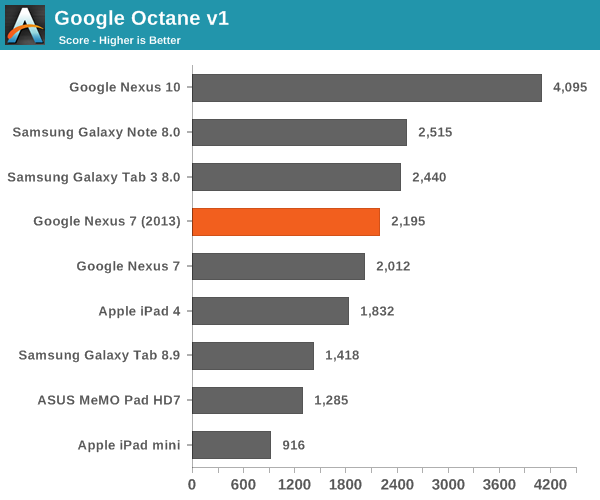


The GPU
Qualcomm seems to be frequency binning here, which is standard industry practice. Using binning to create these different SKUs gives Qualcomm pricing flexibility and also gives it the option to give large customers special treatment.
On the graphics side Qualcomm's Adreno 320 GPU makes an appearance. Clock speeds are also limited to 400MHz, compared to 450MHz for the high-end Snapdragon 600 implementations we've seen.
The APQ8064-1AA's dual-channel memory controller is populated with four x 16-bit DDR3L-1600 memory devices, giving the Nexus 7 a healthy amount of memory bandwidth. Peak memory bandwidth available to the APQ8064-1AA is 12.8GB/s, equalling what's available to Apple's A5X in the 3rd generation iPad with Retina display. Tons of memory bandwidth is obviously a pre-requisite for driving a high resolution display, and the combination of DDR3L-1600 and the Adreno 320 GPU delivers a butter smooth UI in all well written Android apps.
Although CPU performance is somewhat middle of the road compared to the rest of the landscape, GPU performance is faster than any other Nexus device on the market - and pretty much faster than any other similarly sized tablet:
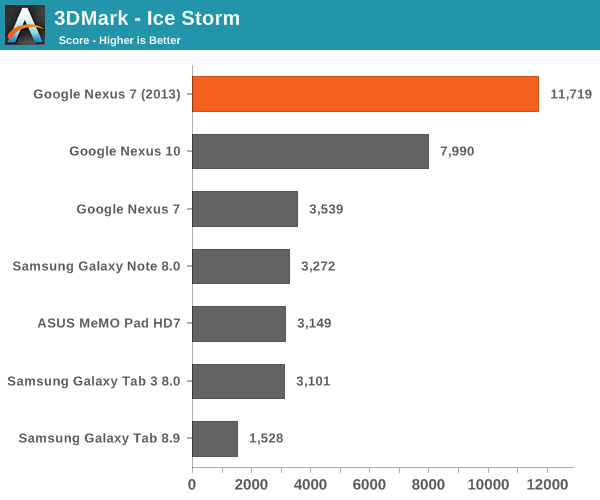
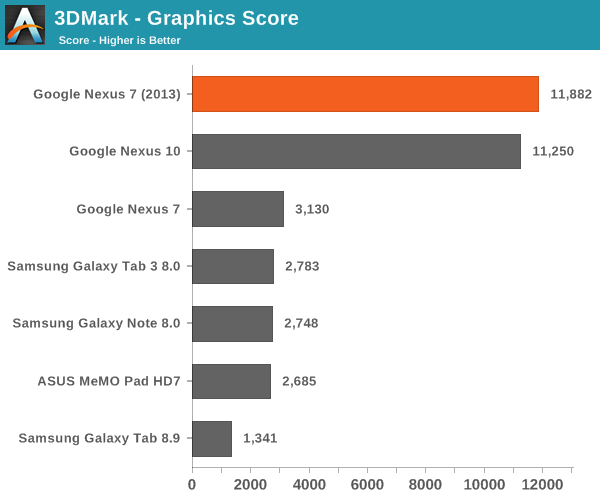
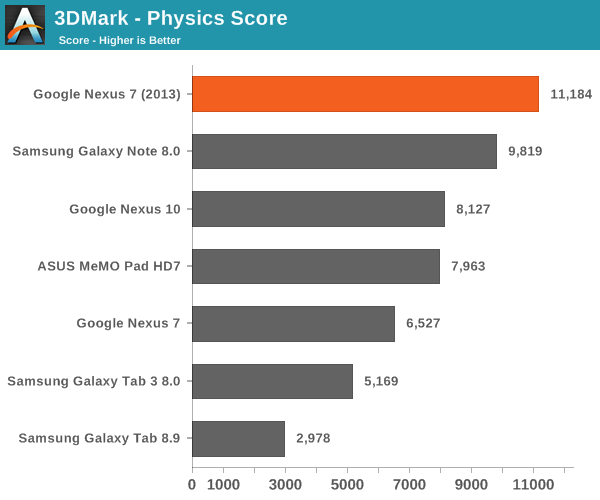
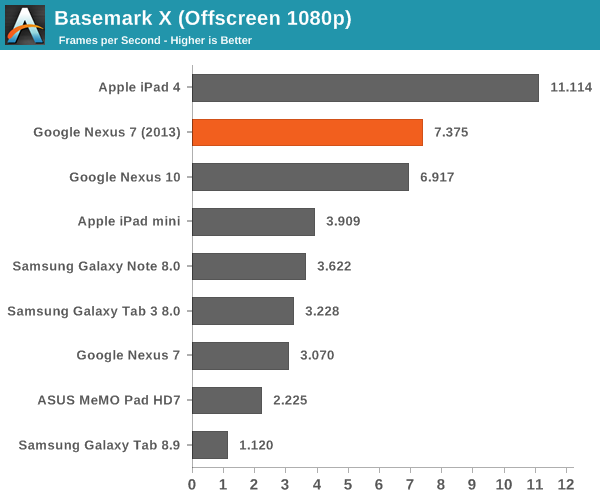
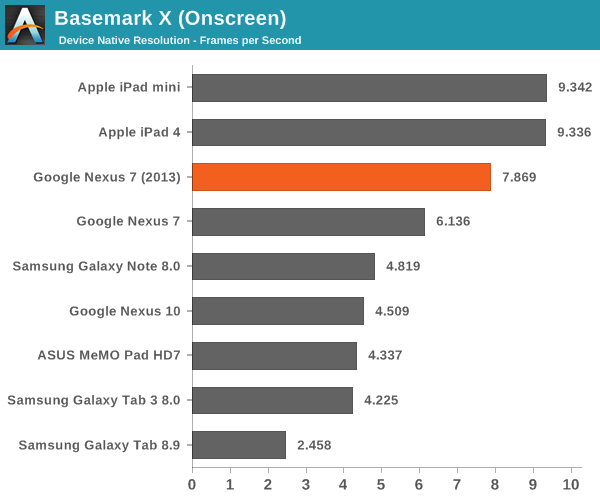
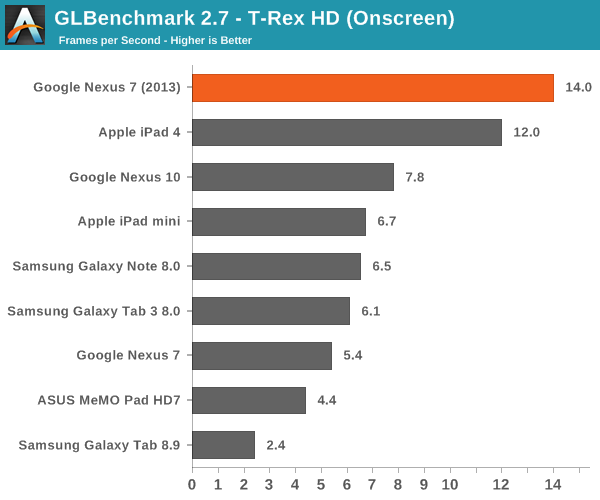
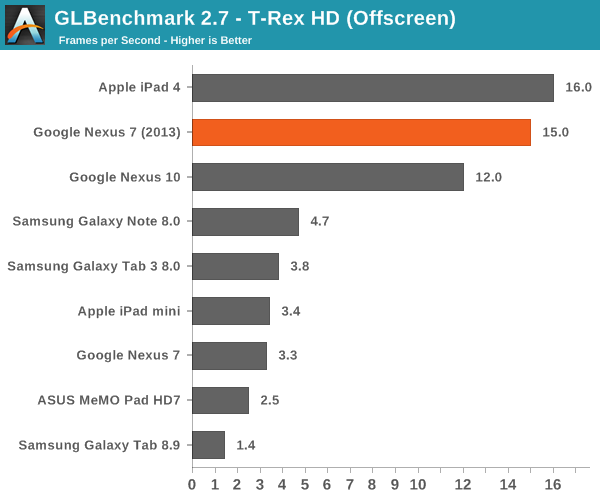
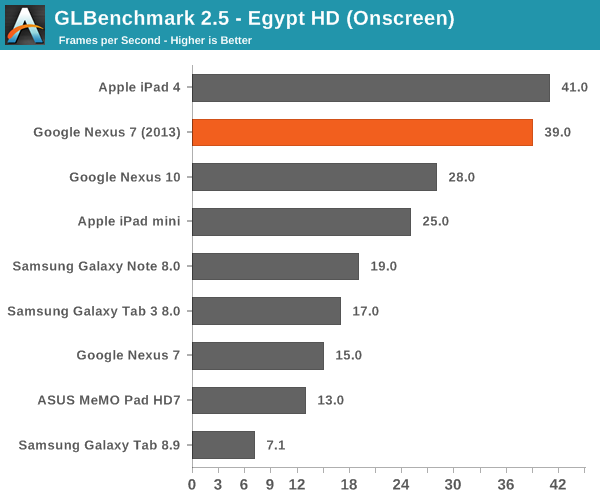
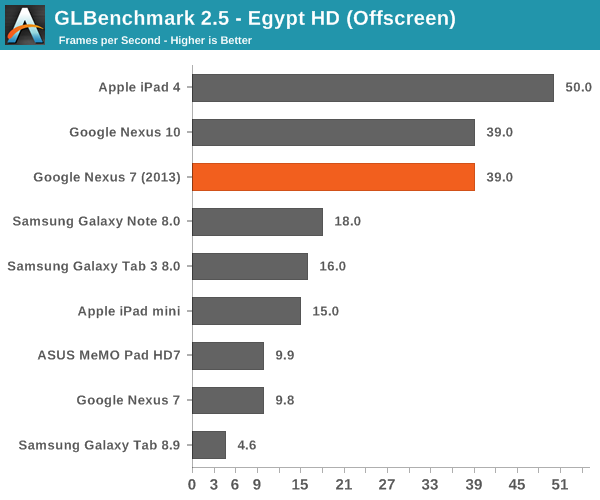
I played Modern Combat 4 as well as Shadowgun, both demanding 3D titles, on the new Nexus 7. Both titles appeared to render at the Nexus 7's native 1920 x 1200 resolution, and both appeared to do so at around 30 fps.


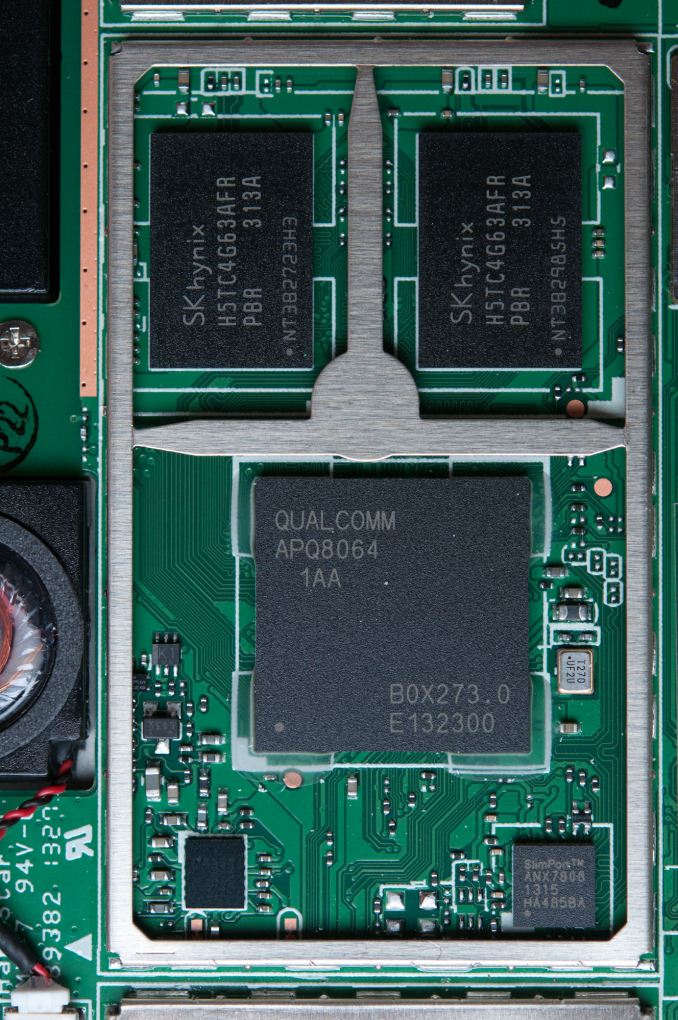
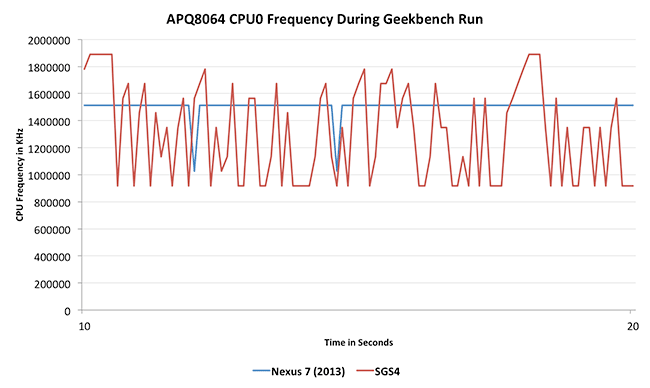
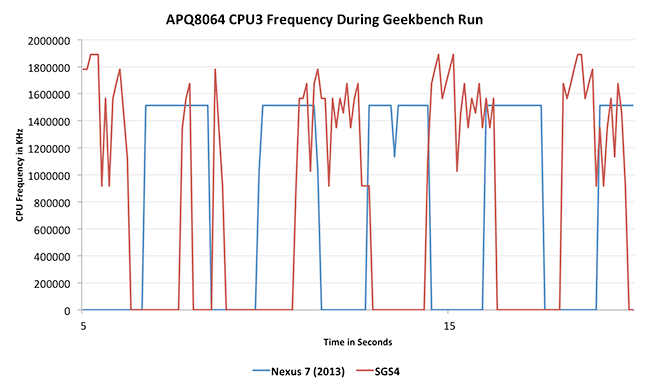








202 Comments
View All Comments
justacousin - Tuesday, September 3, 2013 - link
Sorry, what I meant to ask was: So what is going to be Nexus' next steps to improving their device?harrydevlin - Monday, September 16, 2013 - link
One big difference that is often overlooked when comparing tablets is the presence or absence of a GPS. The Nexus tablets all have a GPS receiver, even in the Wi-Fi only versions. iPads do not have a GPS receiver in the Wi-Fi only versions.Some of the most compelling tablet apps require a GPS receiver. For example, using a tablet as a GPS mapping device, with stored maps, requires a GPS.
shermanx - Wednesday, October 2, 2013 - link
the battery doesn't seem right for mine. I guess either I got a defective unit or this review did it with a "tablet sheet battery". I get maybe half of what's claimed here and the battery seems to drain very fast even when I don't use the tablet (battery dies in 2-3 days if I leave it idle).sireangelus - Saturday, October 5, 2013 - link
Would you ming having an article on the nexus 7 2012 slow charging issue ??? it's frustrating. Maybe if you make a fuss something will be done about it- like warranty extension of something.SOORAJ - Wednesday, October 9, 2013 - link
when it will be launched in India? and what will be the price?lookit77 - Saturday, October 12, 2013 - link
How about a review of the LTE version of the Nexus 7 or an update to this review?Eugene88 - Saturday, October 26, 2013 - link
I'm very curious about battery change. i.e. frequent usage of tablet drained battery, so it doesn't hold even for an hour. Is it possible to change battery? Haven't found any openings on tablet.Very well written article.
WillyJ - Wednesday, November 6, 2013 - link
Sadly, my daughter has shattered her display. Does anyone know a reliable source for replacement display assemblies?ESC2000 - Thursday, January 2, 2014 - link
You know it's actually surprising to me how the nexus 7 blew the original iPad mini out of the water in every test except for one. Granted the original mini was a three months from the end of its life cycle. Apple is still selling it, though, for a super inflated price of $300, which makes it somewhat in the nexus 7's price range. The reins mini at $400 may surpass the nexus 7 but is not a good value with its low functionality:price ratio.I just remember the constant arguments with apple fans claiming the original mini was better than the nexus 7 2013, and I think the lopsided nature of these numbers shows that objectively it was not better (although in individual cases there may be some reason to purchase it over the nexus 7).
mittoo - Friday, January 10, 2014 - link
Nice review and a lot of insight on screen quality.I have on complaint though. Why is iPhone 5 included in the pixel per inch list? What, you don't like Google products on top? After praising the device so much you could let it have the top spot in that. Why randomly add a phone? And it is not like the iPhone 5 has the highest ppi either.